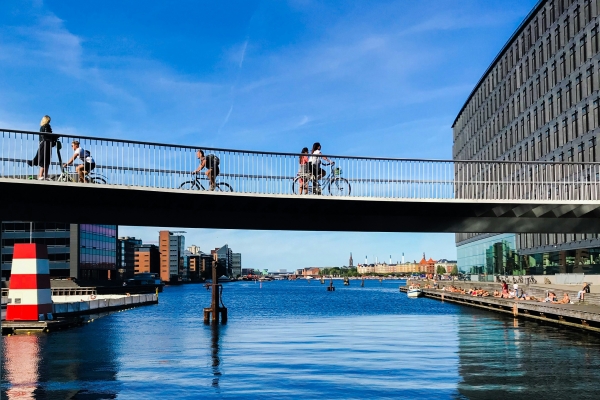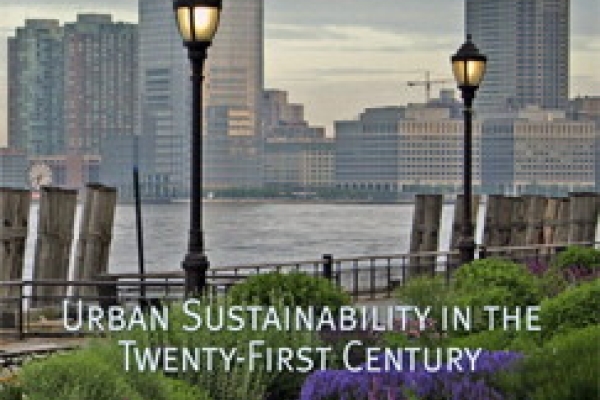The first Earth Day was held in Philadelphia on April 22nd 1970. It was the culmination of a week of related events celebrating emergent environmental consciousness conceived and organized by students in what was then the Graduate School of Fine Arts at the University of Pennsylvania (now known as PennDesign). Speakers included Ralph Nader, Ian McHarg, Rene Dubois, Paul Ehrlich, Lewis Mumford and Allen Ginsberg, replete with performances by the entire cast of the musical ‘Hair’. As we would say today, news of the event “went viral” at the time and incited worldwide celebrations-as-protests that persist to this day.
The catalyst for the socio-political phenomenon of Earth Day was NASA imagery of the whole earth in space made public due to clever lobbying by Stuart Brand and Buckminster Fuller. Images from V-2 rockets as early as 1946 had shown the curvature of Earth against the void of space, but none had shown the entire planet as an object in space until Apollo 8 astronaut William Anders’s shot known as “Earthrise” on Christmas Eve, 1968. This was followed by the now-ubiquitous “Blue Marble” image taken by the crew of Apollo 17 on December 7, 1972. What Newton, Darwin, and Einstein had described with their various theories of interconnectivity between humanity and the environment was now popularly comprehensible in one image. But more than interconnectivity, what the whole earth image stressed more than anything was the geographical reality of ecological limitations.
Consequently, publications such Brand’s Whole Earth Catalogue, Fuller’s Operating Manual for Spaceship Earth (1968), followed by the Club of Rome’s book-length report, The Limits to Growth (1972), all made the now obvious point that our Earth is finite whilst modern ideas of progress are not. Also, for the first time in urban history, utopias such as Ernst Callenbach’s Ecotopia (1975) suggested reconciliation not only between the urban and the rural, but between culture and nature more broadly. These utopias also exhibited a deep nostalgia for animism, a so-called “return to nature” that intersected with eco-feminist interests in pre-urban matriarchy and long-since repressed conceptions of a feminine earth deity.
Only two decades or so later however, notable books on the topic of global nature-culture relations realized the impossibility of any such return and instead of utopia faced squarely the dystopian conditions of the present. A spate of books, including Kate Soper’s What is Nature (1995), Alexander Wilson’s The Culture of Nature (1991), Bill McKibben’s The End of Nature (1989), and Carolyn Merchant’s The Death of Nature (1983), all asked not, “How do we return to a pure nature?” but, rather, “How do we now manage the denatured?” [ii]
In this vein, infamous author of ‘The Gaia Hypothesis’ James Lovelock argues that the planet’s self-regulatory systems (which wax and wane between ice ages and are perfectly suited to the production and sustainment of diverse life-forms) are now jeopardized by atmospheric carbon levels of more than 400 parts per million.[iii] To put a fine point on it, Lovelock predicts that, because of irreversible climate change, Earth will in all likelihood become, as he puts it, “like her dead sibling, Venus.”[iv] After reviewing a range of geoengineering solutions such as altering the chemical composition of the atmosphere, cultivating algal blooms in the ocean, and launching orbiting shade structures, Lovelock recommends that we simply lock up all remaining habitat and construct new ecosystems to sequester carbon.[v] And, for the first time in history, this is precisely what governments, NGO’s and global conservation networks are now seriously trying to do.
The primary global policy setting for habitat preservation- as agreed to by the 195 nations who are party to the United Nations Convention on Biological Diversity- is that 17% of the Earth’s terrestrial area and 10% of its oceans be set aside and legally protected by 2020. Given that currently 15.4% percent of the world’s terrestrial area is under some form of protection; the Convention therefore only requires that another 1.6% percent be secured.[vi] Small as this target may seem, it needs to be seen in the context of ongoing rates of deforestation in certain regions. It also needs to be appreciated that the small print of the Convention states that the protected habitat must be representative of the earth’s entire 867 different eco-regions and, in cases where they are lacking, they must be reconstructed to a net total of 15% of land area. The Convention also stipulates that designated areas of protected habitat should be interconnected with one another. Taken as a whole, the Convention on Biological Diversity mandates new land-use patterns on a global scale.
Protective and restorative measures will find opportunities where rural landscapes are emptying, and threats where cities and their related infrastructure are expanding. If restoration is planned in a manner that is unrelated to the more powerful processes of urbanization occurring worldwide, then they will be fragmentary, fragile and unlikely to deliver substantive ecological gains. As studies by the Yale School of Forestry estimate, there will be approximately another 296,526,457 acres (120,000,000 hectares) of land subsumed into urban development globally by 2030 and much of it in the world’s biodiversity hotspots.[vii] Although it is much easier said than done, in the spirit of those students who began the Earth Day initiative today’s planners and landscape architects should be on the frontline of this issue.
Richard J. Weller is a Penn IUR Faculty Fellow and the Martin and Margy Meyerson Chair of Urbanism and Professor and Chair of Landscape Architecture.>/em>
[i]. Earth Week. Earthweek1970.org. Web. www.earthweek1970.org>.
[ii]. Soper, K., What is Nature? Culture, Politics and the Non-Human (Oxford, UK: Blackwell, 1995); Wilson, Alexander, The Culture of Nature: North American Landscape from Disney to the Exxon Valdez (Toronto, Canada: Between the Lines, 1991); Merchant, Carolyn, The Death of Nature: Women, Ecology and the Scientific Revolution (New York: Harper and Row, 1983); and McKibben, Bill, The End of Nature (New York: Random House, 2006; first published by Anchor in 1989).
[iii]. Lovelock, James, The Ages of Gaia: A Biography of Our Living Earth (New York: W. W. Norton, 1988).
[iv]. Lovelock, James, The Vanishing Face of Gaia: A Final Warning (New York: Basic Books, 2010), 199.
[v]. Ibid., 141–52.
[vii]. Seto, Karen C., Burak Güneralpa, B., and Lucy R. Hutyrac, “Global Forecasts of Urban Expansion to 2030 and Direct Impacts on Biodiversity and Carbon Pools,” Proceedings of the National Academy of Science of the United States, Vol. 109, No. 40 (2012).



